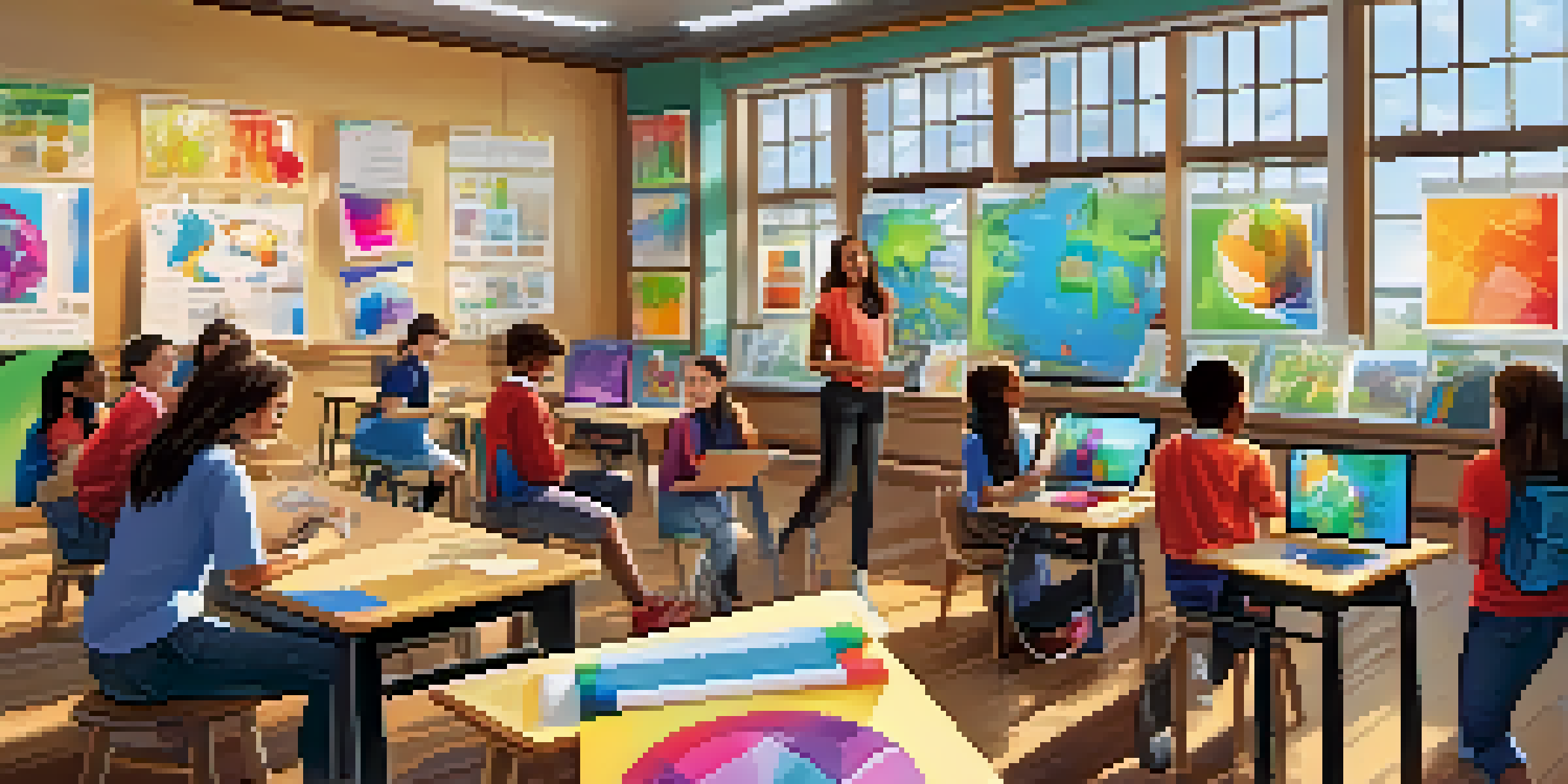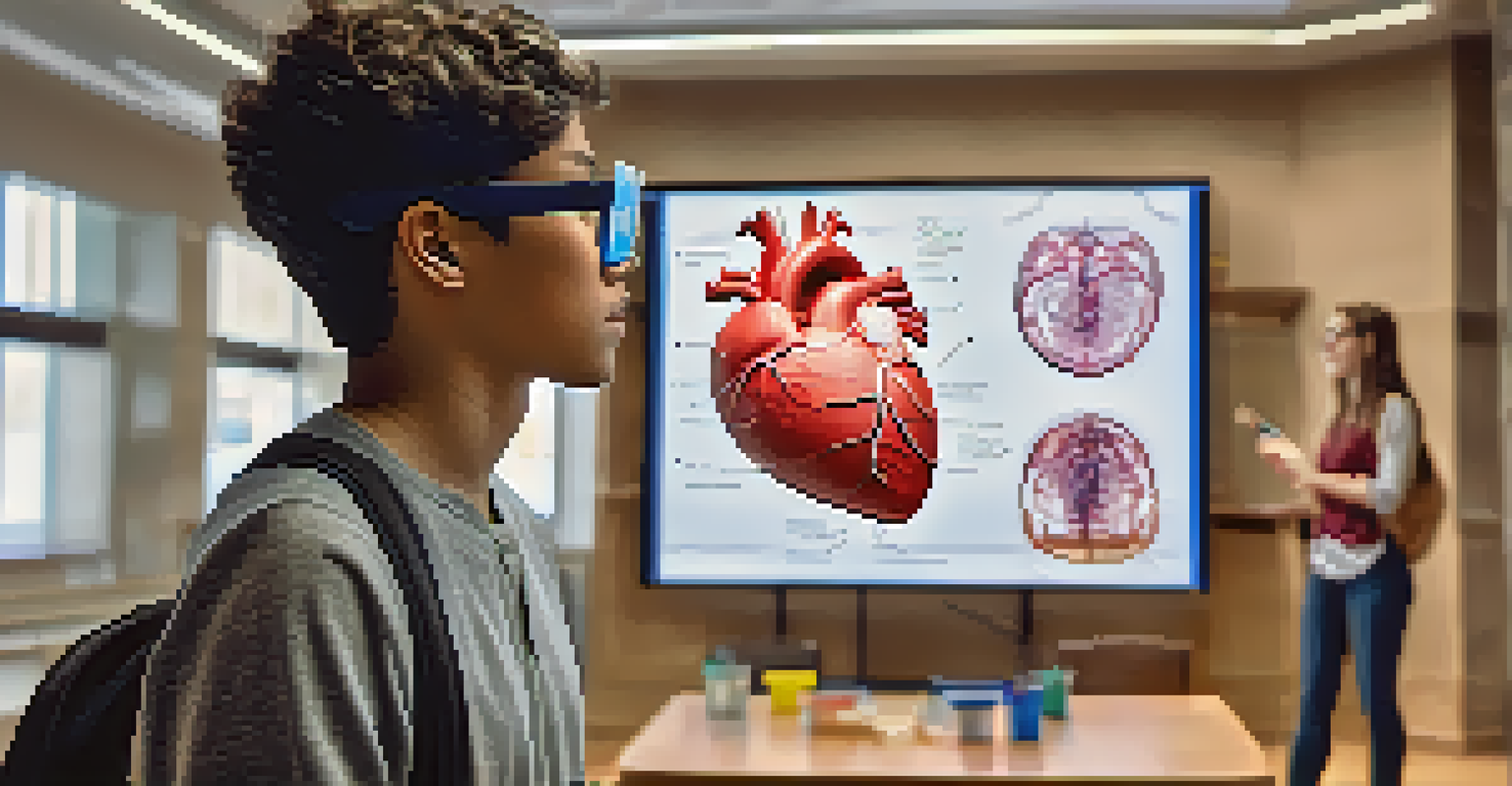AI Tools for Enhancing Visual Learning and Multimedia Resources

Understanding Visual Learning and Its Importance
Visual learning is a powerful method where individuals grasp information better through images, diagrams, and videos. This approach caters to those who find it easier to understand concepts when they see them rather than just reading about them. Not only does it make learning more engaging, but it also enhances retention and recall, making it a popular choice in educational settings.
Visual learning is not just a way to teach, but a way to engage and inspire.
Imagine trying to learn how to cook a complicated dish. Watching a video that shows each step visually often sticks in your mind more than a lengthy recipe. This is the essence of visual learning, where seeing is often believing—and remembering.
As educational environments evolve, incorporating visual elements becomes essential to meet diverse learning styles. This is where AI tools step in, offering innovative solutions that can transform the way we present and interact with visual content.
AI Tools for Creating Visual Content
Creating engaging visual content is easier than ever with AI tools like Canva and Adobe Spark. These platforms utilize AI to provide design suggestions, templates, and even automated layouts that save time and enhance creativity. Users, regardless of their design expertise, can produce professional-looking graphics to aid their learning materials.

For instance, if you’re preparing a presentation, these tools can suggest color schemes, fonts, and layouts based on the content you input. This tailored assistance can help ensure your visuals are not only appealing but also effective in communicating your message.
Visual Learning Enhances Retention
Visual learning methods, such as using images and videos, significantly improve information retention and engagement.
By leveraging AI-driven design tools, educators and learners can focus more on the content of their materials rather than getting bogged down by technical skills. This democratizes content creation, making it accessible for everyone.
Enhancing Engagement with Interactive Videos
Interactive videos are revolutionizing the way we learn, and AI plays a crucial role in this transformation. Tools like Edpuzzle allow educators to embed questions, notes, and links directly into videos, making the viewing experience more engaging. This interactivity helps reinforce learning by prompting viewers to reflect on what they’ve just watched.
Technology will not replace great teachers, but technology in the hands of great teachers can be transformational.
Think of it this way: instead of passively watching a video, you are actively participating in the learning process. This method not only keeps attention but also encourages critical thinking and better retention of information.
With the ability to analyze viewer responses, educators can gain insights into which concepts students understand and which ones need more emphasis. This feedback loop is invaluable for tailoring future lessons.
Augmented Reality (AR) for Immersive Learning
Augmented Reality (AR) takes visual learning to the next level by blending digital content with the real world. Applications like Merge Cube allow users to hold a physical object while interacting with 3D models, creating a unique learning experience. This immersive approach helps learners visualize complex concepts in a tangible way.
Imagine studying anatomy and being able to explore a 3D heart model that you can rotate and investigate from all angles. This hands-on experience not only makes learning more engaging but also enhances comprehension and retention.
AI Personalizes Learning Experience
AI tools tailor educational content to individual learning styles, ensuring each student receives support suited to their needs.
As AR technology continues to evolve, the possibilities for educational applications are vast. It encourages curiosity and exploration, turning traditional learning on its head.
AI-Powered Personalization in Learning
One of the most exciting advancements in AI is its ability to personalize learning experiences. Platforms like DreamBox and Smart Sparrow analyze student data to tailor lessons to individual learning styles and paces. This means that no two learners have to experience the same journey, allowing for a more effective and engaging educational process.
For example, if a student struggles with a particular math concept, the AI can automatically adjust the curriculum to provide more practice in that area. This targeted approach ensures that learners receive the support they need, when they need it.
Personalization not only boosts confidence but also encourages a love for learning. When students feel that their unique needs are being met, they are more likely to engage and succeed.
Using AI for Language Learning Enhancement
Language learning can be greatly enhanced with AI tools that offer visual and audio support. Applications like Duolingo use gamified elements and instant feedback to encourage progress. Such tools often include visual aids, like images or videos, that help learners associate words with meanings more effectively.
For instance, when learning a new vocabulary word, seeing an image of the object alongside the word can cement the connection in your mind. This multi-sensory approach makes the language acquisition process more enjoyable and intuitive.
Interactive Videos Boost Engagement
Interactive videos transform passive watching into active learning, enhancing critical thinking and retention through viewer participation.
Moreover, AI can adapt to a learner's progress, offering more challenging content as they improve. This dynamic interaction keeps learners engaged and motivated.
The Future of AI in Visual Learning
As technology advances, the future of AI in visual learning looks promising. The potential for more sophisticated tools that can analyze and adapt to learning behaviors is limitless. With developments in machine learning and data analytics, we can expect even more personalized and effective educational experiences.
Picture a classroom where every student's learning journey is uniquely catered to their strengths and weaknesses, all thanks to AI. This future could lead to higher engagement levels and improved academic outcomes across diverse learner populations.

Embracing these technologies can ultimately reshape the educational landscape, making learning more accessible, enjoyable, and effective for everyone.